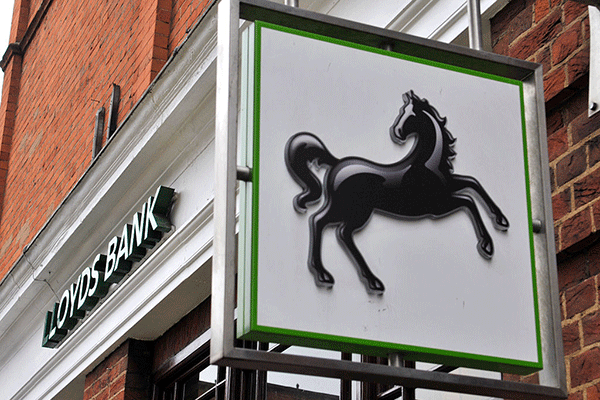Lloyds Bank: a strong quarter reflects strength and prudent planning
27th October 2022 09:06
by Richard Hunter from interactive investor
A robust showing from the bank in Q3 coupled with a dividend yield of 5% means this blue-chip remains attractive to investors, writes Richard Hunter.

Despite being labelled as something of a barometer for the struggling UK economy, Lloyds Banking Group (LSE:LLOY) has had a strong quarter which underlines its strength and prudent planning.
As expected after the release of bank results from the US, UK banks have thus far mirrored the increase in credit impairment provisions, which has drastically altered the headline numbers. For Lloyds, a further impairment in the quarter of £668 million compares to a release of £119 million a year previous, bringing the cumulative total this year to a provision of £1.045 billion versus a release of £853 million in the first nine months of 2021. The quarterly year-on-year swing has inevitably fed through to marring the overall number, with pre-tax profit of £1.51 billion being down by 26% on the previous year’s result of £2.03 billion.
- Read about how to: Open a Trading Account | How to start Trading Stocks | Top UK shares
However, underneath the bonnet there are a number of areas of growth which augur well for the upcoming challenges.
Loans and advances to customers increased by £7.7 billion in the quarter including – importantly – growth in the mortgage business, in which Lloyds is a major player and where any recent bond market volatility has yet to have any significant impact. Within this growth, unsecured loans and credit card balances have risen, although the group has not seen any material increase in bad debts and defaults, despite the conservative approach it has taken in making provisions for a tougher environment ahead.
Coupled with the rising interest rate backdrop, the bread and butter business has therefore seen some benefit, with most of the key metrics forging ahead as a result. Net Interest Income rose to £4.6 billion from £4.3 billion in the second quarter, with Net Interest Margin improving over that period from 2.87% to 2.98%.
- Barclays’ diversity gives bank resilience in the face of adversity
- HSBC kicks off UK bank sector results
- HSBC shares: what the City thinks
In addition, despite an increase in costs resulting from planned technology expenditure, most notably the drive towards digitisation which will result in significant future savings, the cost/income ratio remains the one to beat in the sector. For the third quarter, the ratio was 47.8%, which compares with a number of 51.8% at the end of the half-year, and which brings the year-to-date figure to 50%, which is comfortably ahead of the ratios generally being seen elsewhere.
At the same time, and as with its peers, a strong balance sheet awash with capital leaves the bank in a stable place. The capital cushion, or CET1 ratio stands at 15%, up from 14.7% at the half-year, and well in advance of the bank’s own target of 12.5%. The Liquidity Coverage ratio has also risen to 146% from 142%, leaving the bank with an eye on future shareholder returns. In the meantime, a dividend yield of 5% remains most attractive given the current interest rate backdrop and the paucity of decent cash savings rates.
- Boost for income seekers as weak pound benefits FTSE 100 dividend
- Wild’s Winter Portfolios return for 2022-23
- Is the UK still the top dog for income investors?
In all, this is a robust showing from Lloyds. On an underlying basis, and stripping out the provisions, underlying profit increased by 22% in the quarter to £1.73 billion and is ahead by 29% in the year to date. The Pensions and Investments business previously known as Wealth has seen an increase of 6% year-on-year in income, which is another sign of potential further down the road as the bank looks to transform and yet grow its business at the same time. The share price has tended to reflect concerns on the wider UK economy and its faltering prospects, and has fallen by 13% over the last year, as compared to a drop of 3% for the wider FTSE 100. This has not deterred longer-term supporters of the story, however, with the market consensus remaining at a buy.
These articles are provided for information purposes only. Occasionally, an opinion about whether to buy or sell a specific investment may be provided by third parties. The content is not intended to be a personal recommendation to buy or sell any financial instrument or product, or to adopt any investment strategy as it is not provided based on an assessment of your investing knowledge and experience, your financial situation or your investment objectives. The value of your investments, and the income derived from them, may go down as well as up. You may not get back all the money that you invest. The investments referred to in this article may not be suitable for all investors, and if in doubt, an investor should seek advice from a qualified investment adviser.
Full performance can be found on the company or index summary page on the interactive investor website. Simply click on the company's or index name highlighted in the article.